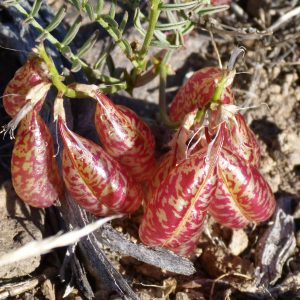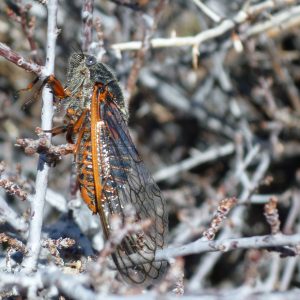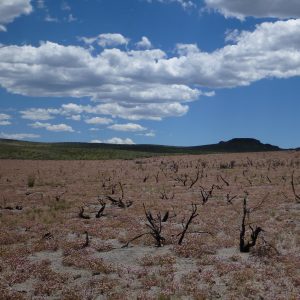I remember, back in middle school, how the summers used to lazily drift by. Fall, winter and spring were all terrifically busy, but for those few warm months I had all the time in the world and it seemed like forever (not in a bad way) until the seasons turned. Now, out of college, my experience is reversed. The warm season is full to the brim with work, traveling and of course lots of outdoor adventures, while the winter months can be almost lackadaisical. I have to say though, that this summer may have gone by the fastest out of any so far! As I look out over the Bodie Hills, richly colored with turning aspen, it seems like only a few days ago that those same hills were still white with patches of snow. The sage grouse chicks that weren’t even eggs when I arrived are now fully grown, and plants that I couldn’t ID for lack of flowers in the early spring shed their last seeds months ago. Its pretty crazy, but I can’t complain – life flies when you’re having fun.
That’s right, even a job can be fun! While I can’t say I will miss the miles of bumpy roads, some tedious surveys and the occasional day where I didn’t bring enough water for the heat, I have genuinely enjoyed my CLM experience here in Bishop. My co-intern Leah, mentor Martin and all of the rest of the BLM staff were truly fantastic and I feel pretty lucky that I got to spend my summer here with them. Every day is spent somewhere beautiful and I do feel that the work the BLM does here is improving the prospects for the area’s flora and fauna, as well as recreational opportunities.
It hasn’t been all fun and games though, I’ve learned to use oodles of new monitoring techniques, how to find sage grouse with radio-telemetry and all about seed collection from start to finish. I’ve also learned a ton about the ecology of the great basin, how to reverse an outlandishly huge truck a mile and a half down a narrow dirt road, and maybe, just maybe, I’ve learned a little about myself. I know that I like being outside, and dislike driving to get there. I know that I can ID plants better than most folks, but have no interest in becoming a professional taxonomist or anyone who specializes in identifying sagebrush. I also know that while the desert sagebrush landscape and the white granite of the eastern Sierra are both beautiful, my heart is tied to green trees and rivers that eventually reach the ocean.
What I don’t quite know still is what exactly I want to do with my life. Working for the BLM has made me more aware of the upsides and downside of a career with a government agency, but I don’t know that the experience has pushed me in one direction or the other. I’d like to find a graduate program in ecology, but after a summer of exploring dozens of different projects, its hard to picture tethering myself to one very specific corner of research. I guess we’ll have to wait and see how the fall goes. I have a feeling that with things not traveling at light speed, I’ll have time to organize my head a bit. Fortunately, I’m sure that wherever I end up, this internship will be good preparation, partly because of the skills that I’ve learned, but mostly because of the initiative that I was allowed to take on projects. Its definitely been a growing experience, and even though my 5 months has flown by, it was certainly a good time while it lasted.
Shoutouts to my mentor Martin and co-mentor Sherri for going out of their way to make my internship experience an awesome one. Also shoutouts to Krissa, Wes and the other staff at Chicago Botanic Garden (and the BLM too, for that matter) for being so easy to talk to and, in the CBG’s case, orchestrating a great workshop. Finally, to all my fellow CLM’ers, especially my co-intern Leah, it was truly a pleasure to get to know all of you, at least a little bit. No matter where exactly we end up, I’d be surprised if I didn’t cross paths with at least some of you later in our careers. Hopefully we can go hiking too!
Until next time, happy trails,
Bridger Cohan









